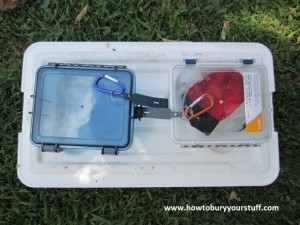Tricks and Tips for Caching
Because no one can take what they cannot find
I’ve put together this webpage to share a few little tricks that I’ve learned over the years. It’s a little haphazard and disorganized but I’m hopeful that this page might save you some time, money or frustration.
Don’t underestimate good old-fashioned Zip-Loc brand (not generic or any other brand but ZIP-LOC brand double-zipper) baggies in either quart or gallon size. These things are great; cheap and totally watertight.
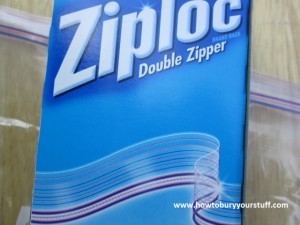 Just burying a single flashdrive or a few pieces of jewelry? Use the simplest version of my Bell Method. Take a Vitamin Water bottle like this one that I found in the corner of my garage.
Just burying a single flashdrive or a few pieces of jewelry? Use the simplest version of my Bell Method. Take a Vitamin Water bottle like this one that I found in the corner of my garage.
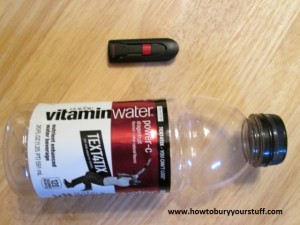 Drop your flashdrive into a Zip-Loc baggie, seal it and then drop that baggie into another one. Leave just enough air so that the flashdrive would float and slip it into the bottle.
Drop your flashdrive into a Zip-Loc baggie, seal it and then drop that baggie into another one. Leave just enough air so that the flashdrive would float and slip it into the bottle.
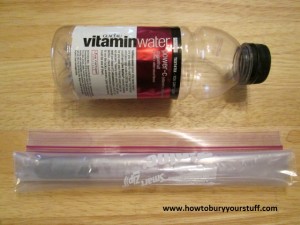 Screw the cap on firmly, bury the bottle upside down and boom! Just like that, you’ll have a cache that will last remain secure for many years. A bottle this size should be good-to-go for a depth of no more than 24 inches, any deeper and the weight of the dirt could crush it. Be sure to bury it upside down so if the cap does leak, water still won’t get in. Need to shield it from EMP?…just wrap it in aluminum foil or copper mesh; FYI the copper mesh is best since it’s the better conductor. Total cost is probably less than 5 bucks, it requires no tools and it will protect your flashdrive for many years.
Screw the cap on firmly, bury the bottle upside down and boom! Just like that, you’ll have a cache that will last remain secure for many years. A bottle this size should be good-to-go for a depth of no more than 24 inches, any deeper and the weight of the dirt could crush it. Be sure to bury it upside down so if the cap does leak, water still won’t get in. Need to shield it from EMP?…just wrap it in aluminum foil or copper mesh; FYI the copper mesh is best since it’s the better conductor. Total cost is probably less than 5 bucks, it requires no tools and it will protect your flashdrive for many years.
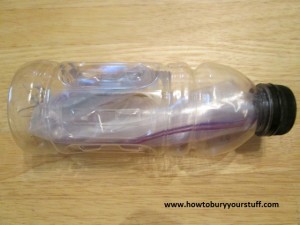 You can see by the last photo, that the flashdrive itself is lodged near the bottom of the bottle. This is ideal since the Vitamin Water bottler will be upside-down, placing the usb drive near the top of the bell.
You can see by the last photo, that the flashdrive itself is lodged near the bottom of the bottle. This is ideal since the Vitamin Water bottler will be upside-down, placing the usb drive near the top of the bell.
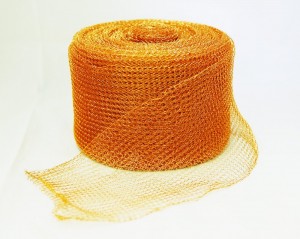 >> Click here to get current pricing and reviews from Amazon.com on Copper Mesh <<
>> Click here to get current pricing and reviews from Amazon.com on Copper Mesh <<
SanDisk makes a model called the “Extreme” and it has solid reviews for both reliability and durability.
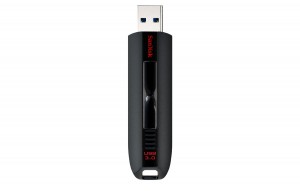 >> Click here to get current pricing and reviews from Amazon.com on SanDisk Extreme USB Flash Drive <<
>> Click here to get current pricing and reviews from Amazon.com on SanDisk Extreme USB Flash Drive <<
When using plastic drinking bottles to cache your valuables underground, do NOT use clouded plastic containers like milk jugs. Liquids like milk and motor oil are usually bottled in HDPE marked as #2 on the SPI recycling label. This label is located on the bottom of every plastic container; it has 3 arrows in the shape of a triangle and usually says, “Please recycle.” Drinking containers and small bottles made from HDPE plastics will crack, split and break apart very quickly (within a year). Stick with clear plastics; PET/PETE or #1 on the SPI recycling label…
 …and remember that this rule applies only to drinking containers like milk jugs. I believe most 5-gallon buckets are HDPE or #2 on the SPI recycling label and I’ve used plenty of them over the years; when using Tupperware or Rubbermaid type products, look for a #5 on the SPI label.
…and remember that this rule applies only to drinking containers like milk jugs. I believe most 5-gallon buckets are HDPE or #2 on the SPI recycling label and I’ve used plenty of them over the years; when using Tupperware or Rubbermaid type products, look for a #5 on the SPI label.
If you are looking to safeguard important photographs or documents, just bury them in your yard for convenience. Remove any staples or paper clips and use only plastics to cache them. Without any metals present, they would be virtually invisible to most technology. You could actually tell your neighbors that you had valuable documents buried in your garden or flower bed; and anything short of ground penetrating radar would be useless in locating them.
I rummaged through my garage today and found several items worth mentioning. I found an old cooler with a lid and it’s just perfect for depths of up to about 3 or 4 feet.
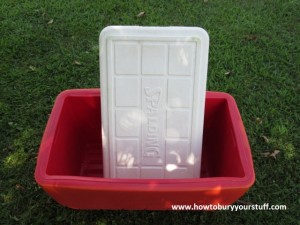 Bury it upside-down and make sure you bury it with the lid. Without the lid, the weight of overhead soil will slowly push it deeper, displacing precious air. Place your valuables in waterproof containers on the lid of the cooler. If the cooler does not remain level, it won’t matter at all because any water entering along the bottom will just make these two Outdoor Products dry boxes float.
Bury it upside-down and make sure you bury it with the lid. Without the lid, the weight of overhead soil will slowly push it deeper, displacing precious air. Place your valuables in waterproof containers on the lid of the cooler. If the cooler does not remain level, it won’t matter at all because any water entering along the bottom will just make these two Outdoor Products dry boxes float.
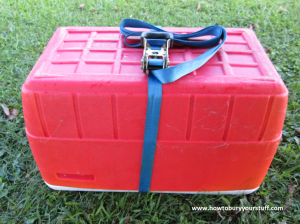 I also found an old garden spray bottle with a broken nozzle. Instead of throwing it away, one could roll up documents, jewelry or flashdrives in Zip-Loc’s and bury it upside-down using my Bell Method.
I also found an old garden spray bottle with a broken nozzle. Instead of throwing it away, one could roll up documents, jewelry or flashdrives in Zip-Loc’s and bury it upside-down using my Bell Method.
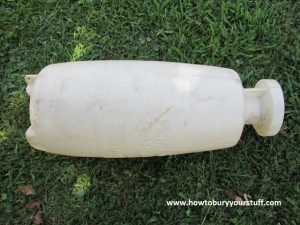 Set it on a piece of wood to prevent dirt from being pushed up inside. Garden sprayers like these are long lasting and very tough. I’m just guessing, but it could probably withstand depths deeper than most of us care to dig. Just as I did with the cooler, I used a ratchet strap to secure the package as one piece. You can count on a quality ratchet strap lasting about three years underground.
Set it on a piece of wood to prevent dirt from being pushed up inside. Garden sprayers like these are long lasting and very tough. I’m just guessing, but it could probably withstand depths deeper than most of us care to dig. Just as I did with the cooler, I used a ratchet strap to secure the package as one piece. You can count on a quality ratchet strap lasting about three years underground.
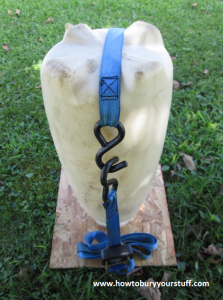 Always remember that just as in everything else in life, creativity counts; some preppers get creative and use tire nozzles to purge their PVC pipe caches with nitrogen and leave 3-5lbs PSI of pressure inside the tube. Without oxygen, nothing can rust or oxidize; and with constant internal pressure, you are guaranteed not to have any water leaking in.
Always remember that just as in everything else in life, creativity counts; some preppers get creative and use tire nozzles to purge their PVC pipe caches with nitrogen and leave 3-5lbs PSI of pressure inside the tube. Without oxygen, nothing can rust or oxidize; and with constant internal pressure, you are guaranteed not to have any water leaking in.
This may sound paranoid, but watch your air cover. There are more eyes in the sky than we realize and all of the precautions in the world won’t matter a bit if there is a photo of you on Google Maps digging a hole in a field 🙂
Comments are currently closed.
 How to Bury Your Stuff
How to Bury Your Stuff